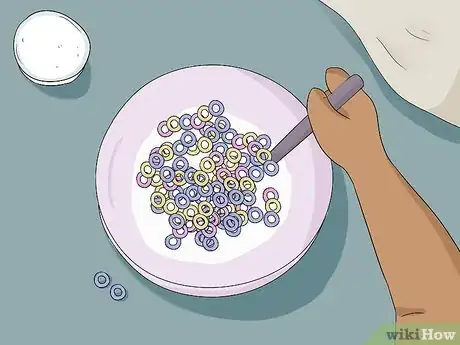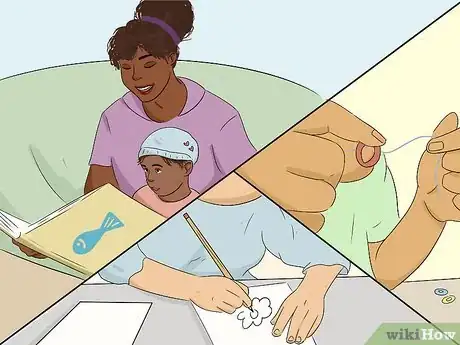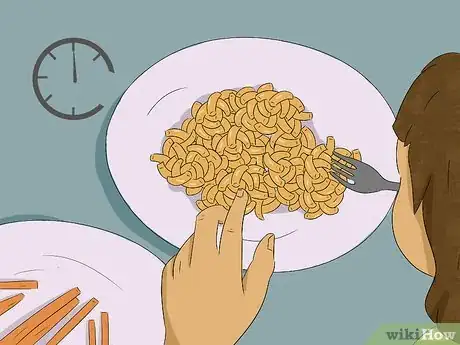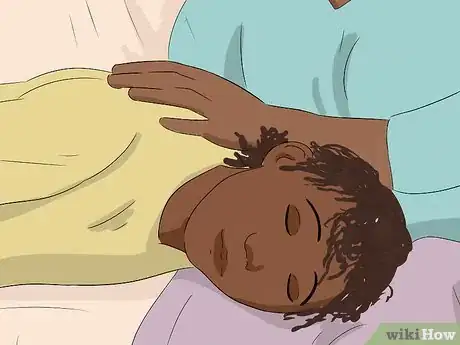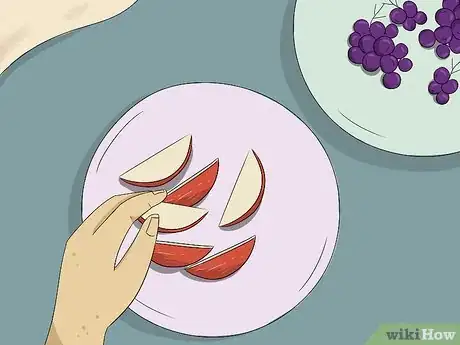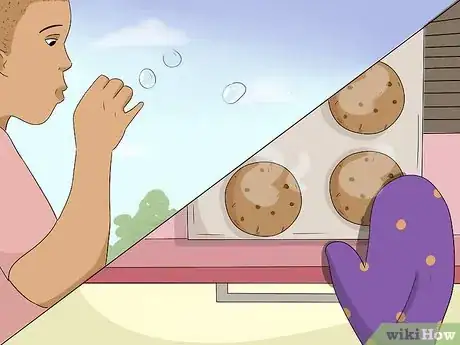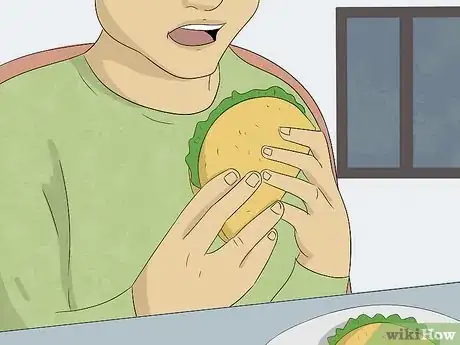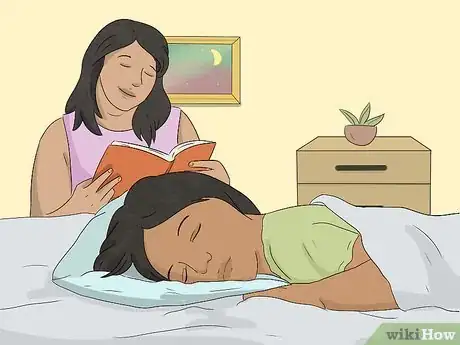wikiHow is a “wiki,” similar to Wikipedia, which means that many of our articles are co-written by multiple authors. To create this article, volunteer authors worked to edit and improve it over time.
wikiHow marks an article as reader-approved once it receives enough positive feedback. In this case, 92% of readers who voted found the article helpful, earning it our reader-approved status.
This article has been viewed 48,771 times.
Learn more...
Young children, ranging from toddlers to those who have just started school, are all different in their own way. That's why you as a parent, guardian, relative, or babysitter play a crucial part in their development. Not only are you helping their fine, gross, and motor skills develop, you're shaping their perspective of life and their surroundings each and every time you are with them. Taking care of a young child might seem challenging at first, especially with all of the tantrums and crying, but by the end of the day you'll be a pro. Read on to discover how you can take care of young children!
Steps
-
1Wake the children up at a set time every day. This can easily be adjusted when necessary, but start with a time such as seven thirty or eight in the morning. You can have an alarm go off for the children to wake up to, such as a favorite children's song or a soft bell. Avoid something too loud, such as a rooster crowing or rock music. If they don't wake up right away, you can gently tap them and say something such as, "Hey, it's time to get up, sleepyhead". Once they are awake, you can start getting them ready for the day by getting them dressed, doing their hair, and brushing their teeth.
- Let the kids feel responsible and a part of their routine by giving them options. You can lay out two shirts and let them choose a shirt, let them choose to wash their face or brush their teeth first, or allow them to either help you set the table or get you the food you need from the refrigerator.
-
2Feed them a healthy, nutrition-filled breakfast. Breakfast is the most important meal of the day, enabling a child to have strength to last them throughout the day. Allow them to help you with a simple task they can accomplish: they can hold the cups while you pour the milk, or assemble their own yogurt parfait. The following are good breakfast ideas you and the young children can enjoy:
- Yogurt Parfaits: All you need for this is vanilla or plain yogurt, blueberries, cut-up strawberries, and granola. Let each child make their own parfait, even if they add a little too much granola on top.
- Special Toast: Of course, you can pop some bread into the toaster, spread jam or peanut butter on it, and serve the kids that. But who wants to be boring? Once the bread's toasted and you've got your spread on it, get everyone involved by making faces on it! Use apple slices for the mouth, grapes for eyes, and blueberries for the mouth.
- Eggs and Bacon: You can easily crack several eggs in a bowl, mix them together, and cook them to make a large batch of scrambled eggs for breakfast. Bacon's easy to cook as well; just follow the directions on the package.
- Cereal: Ah, every kid's favorite. Avoid cereals with a high content of sugar, unless you want the kids bouncing on the walls! If the kids have any dairy allergies or are lactose intolerant, substitute normal milk for milk made out of almonds, cashews, soy, or coconuts.
- Fruit Salad: Cut up any type of fruit that you'd like to incorporate into the salad (e.g. apples, orange slices, grapes), then let the kids stir in whipped topping or powdered milk. If you don't have either, vanilla yogurt works!
Advertisement -
3Begin play time! Vary each activity you do, since young children tend to get bored very easily. Don't get mad if things stray a little off course; remember to just roll with it and have fun! Here are some ideas:
- Pretend to be pirates trying to find treasure in the living room
- Play dress-up with costumes and other silly accessories
- Read stories
- Build a race track for cars or marbles
- Make music with pots and pans
- Do finger-painting. Why not finger-paint on aluminum foil with yogurt?
- Dance to kid-friendly music. Baby Shark is a very popular song for little kids these days, or learn Go-Noodles on YouTube, which are fun, silly dances for kids of all ages.
- Make treats everyone can enjoy (e.g. edible peanut butter play dough)
- Draw pictures, then cut them out into big puzzle pieces and put it back together
- String colorful cereal onto dental floss or yarn
-
4Incorporate informal learning into playtime. Want to encourage learning without the children knowing? Here are some educational but fun activities:
- Take them to your local library if they offer storytime for younger children
- Order fun science or history kits that are suitable for small children
- Take nature walks and explain something to them, such as the metamorphosis of a butterfly if you see a caterpillar.
- If it just rained or snowed, talk about how rain or snow forms. Then dress appropriately (a rain jacket and rain boots if it rained and warm winter clothing if it snowed) and jump in puddles or play in the snow!
- Pick flowers and find leaves, then press them into an old book. If it's fall, gather leaves from different trees, tape them to colored paper, and label each leaf from whatever tree it came from.
-
5Serve lunch around midday. Again, allow the kids to help out whenever possible. You can make ham and cheese sandwiches (cut the bread with a cookie cutter to make the bread look cool), mac n' cheese, chicken nuggets, or crackers with luncheon meat and cheese. Add healthy sides, such as a cheese stick, carrot sticks with ranch dressing, strawberries, or applesauce.
-
6Prepare for nap time. Once lunch is over, the children will need a nap. Set them on their beds or on the couch with a pillow, a blanket, and their favorite stuffed animal. Turn on calming music, or white noise, on your phone; and limit your noises as the children sleep. While they nap, you can either sit in the room and nap with them or accomplish a few things as long as you keep quiet. Though you might want to make a phone call or do your nails, that can most likely wait until later.
-
7Have a snack ready for the children when they wake up. It doesn't need to be elaborate, but at least make it healthy. You can have graham crackers and milk, pretzel sticks and cheese, or apple slices and grapes; on occasions, you can offer a treat if it's a special day (e.g. a birthday).
-
8Choose an afternoon activity. You may have more time in the afternoon, and it might be a good chance to get out of the house.
- Warm weather ideas include:
- Visit your local playground
- Kick a soccer ball in the backyard
- Blow bubbles (you can make bubble wands out of old wire hangers and dish soap out of dish soap and warm water in a metal pan)
- Draw with chalk
- Chase butterflies
- Run through the sprinklers.
- Too stormy or cold? You can:
- Have a dance party
- Build a blanket fort and watch a movie or read under it
- Bake cookies (always supervise the children if you want to use the oven or stove)
- Play children's board games (e.g. Candyland, Operation, etc.)
- Warm weather ideas include:
-
9Feed the kids dinner. Spaghetti and meatballs, a taco or salad bar, grilled cheese and tomato soup, or a vegetable dish are all great options. You can have a theme night, such as rainbow dinner (every food that you server has to range from red to purple) or Italian night. Why not go out to eat or order pizza even? If you're babysitting, be sure to ask the parents for money to pay for takeout/pizza.
-
10Get the children ready for bed. There should be a space of at least an hour or two after dinner before you get the kids ready for bed. Don't do anything too strenuous to get them excited before bed; you can mold with Play Dough or watch a kid-friendly movie. Cut off all screen time an hour before bed by giving a gentle warning.
-
11Establish a before-bed routine that everyone can easily adjust to. You might need to give them a bath, have them brush and floss their teeth, and brush their hair before tucking them in. If the children need a bath, see if each one wants to bathe individually or together in the same tub. Keep the water up to their waists to prevent drowning, and test the water by dipping your elbow in the water to see if it's too hot or too cold. You elbow is more sensitive than your fingertips.
-
12Read the children a bedtime story or sing songs before they sleep. Have each child pick out one book that you can read to them, or one song each you can sing to avoid fighting and disagreement. Then, once you're finished with that, you can tuck them in and tell them good night before turning off any lights and leaving the room. You can crack the door if you want to be able to hear them talking or moving around. Some children may want a night light in their room if they have a fear of the dark.
Community Q&A
-
QuestionHow to spoil them but not too much?
 KY_GirlatHeartCommunity AnswerInstead of spoiling them, why not reward them? Set up a reward system or a chore chart; if they finish all of what you had asked them to do (such as pick up their toys and help you set the table), you can reward them with a cookie or another treat. Set long-time goals too to offer them a larger prize (i.e. if they do one kind act or say one kind phrase a day, they get ice cream on the weekend).
KY_GirlatHeartCommunity AnswerInstead of spoiling them, why not reward them? Set up a reward system or a chore chart; if they finish all of what you had asked them to do (such as pick up their toys and help you set the table), you can reward them with a cookie or another treat. Set long-time goals too to offer them a larger prize (i.e. if they do one kind act or say one kind phrase a day, they get ice cream on the weekend). -
QuestionHow can we get the kids up at 6:30 am or 7 in the morning?
 KY_GirlatHeartCommunity AnswerMake sure they go to bed at a decent hour beforehand so that way they can get enough sleep. You can also set an alarm that plays an appropriate-sounding alarm to wake them up around 6:30 a.m.
KY_GirlatHeartCommunity AnswerMake sure they go to bed at a decent hour beforehand so that way they can get enough sleep. You can also set an alarm that plays an appropriate-sounding alarm to wake them up around 6:30 a.m. -
QuestionI have triplets. How am I going to do all those things every single day?
 KY_GirlatHeartCommunity AnswerTriplets are definitely a handful! Make sure you have a set routine for them, particularly times to sleep and meal times. Activities should be geared towards their interests and age, but be sure to dedicate special times to be spent with them one-on-one if possible. Group activities at the library and trips to the playground/water park/other kid-friendly area can also be used to entertain them.
KY_GirlatHeartCommunity AnswerTriplets are definitely a handful! Make sure you have a set routine for them, particularly times to sleep and meal times. Activities should be geared towards their interests and age, but be sure to dedicate special times to be spent with them one-on-one if possible. Group activities at the library and trips to the playground/water park/other kid-friendly area can also be used to entertain them.
Warnings
- If the children are old enough, be sure that you teach them their address, their full name, and their parents' or guardians' names. If one of them was lost, they can easily recite this if they find someone to help them.⧼thumbs_response⧽
- Keep all cleaning products, medications or vitamins, matches, knives, lighters, cigarettes, and sharp appliances away from the children's reach. You may want to lock cabinets that the children can reach that contain any of these things.⧼thumbs_response⧽

